A live creation experience: twelve artists from Quebec, Canada, France and the United States at work around the theme Past in the Present.
Founded in 1982 by Françoise Labbé under the name of International Symposium of Young Painting in Canada, the International Symposium of Contemporary Art of Baie-Saint-Paul is a unique event in Quebec, recognized both in Canada and abroad. Each year, for a month, twelve artists of different generations and from various disciplines create in front of an audience.
Over the past 35 years, the Symposium has welcomed more than 500 artists from 30 countries in Europe, America, Asia and Africa. Among them are renowned artists: Raymonde April, René Derouin, Marc Séguin, Françoise Sullivan and the BGL du Québec group. Well-known Canadian artists such as Rebecca Belmore, Shary Boyle, Tammi Campbell, Herménégilde Chiasson and Graeme Patterson, have also presented their work there.
The Symposium also served as a springboard for emerging artists, notably in 2015 and 2016, with Christopher Boyne, Mathieu Cardin, Annie Descôteaux, Camille Bernard-Gravel, Samuel Breton, Geneviève Chevalier and Frédéric Cordier, whose work has since been shown more than once. The latest editions have also introduced us to Nicole Bauberger from the Yukon, Michèle Mackasey from Saskatchewan, Mireille Perron from Alberta, as well as Mirimari Vayrinen from Finland, Thibault Laget-ro, Bernard Pourrière and Anne-Sophie Turion from France and Momar Seck from Switzerland and Senegal.
Pasts in the Present. Inventing Tomorrow.
The 2017 edition will look at the question of history, presenting the many ways that artists have developed to examine the construction of history. With the decline of the avant-garde model, artists no longer see themselves as continuing the progress of history, but rather draw widely on its resources as well as that of objects, facts, ideas and models of the past.
Our era, moreover, stands out as having lost confidence in the historical perspective, being even disenchanted when faced with the actual future of humanity.In this context, contemporary art produce, perform and represent history differently. Artists appropriate the past, reinterpret it and replay it in order to reinvent our manner of seeing and envisioning the future in a new way.
Here are just a few of the areas which explored these issues:
1. Forgetfulness and Memory
2. The Included and the Excluded from History
3. The Micro Accounts of History
4. The Setting in Ruins
5. Anachronisms, Parachronisms and Uchronia
6. Travelling in Time
7. Archaeology of the Future
8. The Idea of Progress
9. Utopia
10. Any other art project, exploring the construction of history, or looking towards the future.

Magali Baribeau-Marchand and Sara Létourneau appropriate discarded everyday objects that are loaded with a narrative of sensory potential. They bring these objects back to life, integrating them into installations. With the objective of making the process of remembering tangible, they produce works that deal with the idea of commemoration and tribute.



At the Symposium, they will honor the domestic acts of commemoration, gleaning artificial flowers, discarded or blown away to the edges of cemeteries in the Charlevoix region. In a painstaking work of assemblage, they then produced a quilt for each cemetery visited, showing the features of each one through composition, motifs and colour.


Magali Baribeau-Marchand and Sara Létourneau also constructed a music box and asked visitors to remember a loved one who has passed away and to write their name on a perforated musical partition. The melody increasing with the number of participants. The partition ribbon and the confetti of perforated paper accumulated, exposing the symbolic consequences of each one’s gesture in a participative and openly evolving work.

Magali Baribeau-Marchand’s works has been presented in solo and group exhibitions in various Quebec regions and Montreal, as well as in Athens, Greece.
Sara Létourneau is a multidisciplinary artist performing in events in Canada, the United States, Europe and Asia. She has participated in theatre projects as an actor, set designer, singer and performer. Since 2015, she collaborates to Stellaire, a Francophone electro-folk group
Both artists have degrees from Université du Québec à Chicoutimi and have worked together as a duo since 2015. Their work has been presented at centre d’art actuel Bang in Saguenay and at Langage Plus in Alma.

Guided by an intuitive approach, Charles-Étienne Brochu produces original illustrations reflecting a playful vision of the world. His ambiguous images contrast the vivid colors of the drawing with dark and disturbing themes. His privileged subjects come from experiences that put personal development in tension with alienation in our social relations or our consumption habits.
Computer drawing is his favorite medium. This choice allows him to produce images in the form of artist books, flip books and cartoons and present them both in galleries and on the Web. At the Symposium, he created animated gifs whose action takes place in the historic part of Baie-Saint-Paul, giving it a reassuring familiar aspect as well as an apocalyptic strangeness.

The theme of this year’s Symposium, Pasts in the Present, is in continuity with his art practice as it has developed over the last few years, concerning the relationship between history and society. In fact, Charles-Étienne Brochu explores social, personal, political and temporal relationships that impact our contemporary way of life.
For his project, he will create diverse works, based on digital drawing, encompassing today’s perception of past history and the future. His drawings will function a little like illustrations or representations of a society that is both playful and gloomy, reassuring and apocalyptic.

A native of Sainte-Ursule in the Mauricie region, Charles-Étienne Brochu lives and works in Quebec, where he publishes books, fanzines, as well as animated gifs and short films on the Web. He has participated in the Quebec City Fair of Contemporary Art and in events at ARPRIM, VU Photo and Manif d´Art. In the spring of 2015, he participated in an exchange in Nantes, France, sponsored by the Manif’Art. He was awarded the Videre prize for the next generation awarded by the City of Quebec in 2016 and a Première Ovation grant – Visual arts, media arts and crafts.

The works of the Applied Fumisterie Cabinet (C.F.A.) is based on stereotypical, anxiety-provoking or sensitive perceptions of the contemporary world. The C.F.A. creates evolving environments where it invites visitors to unique experiences blurring the boundaries between reality and fiction, hypothesis and fantasy, pathology and normality.



This artist duo has been working for a few years on a project entitled HORIZON 2050, named in reference to crossing the deadline to meet the ecological challenges set at 2049. This dystopia combines ancestral food practices (consumption of worms and insects), current research on the dietary practices of the future (laboratory meat) and futurist fantasy speculations (self-meat and food for the elites). Their approach involves several components: a state food distribution center called the Governmental Food Distribution Unit (U.D.A.G.), the BigBang Self, a self-service counter for middle-class populations and the Banquet reserved for elites.
For the Symposium, the duo imagined a fictitious space for food production. This open laboratory puts fiction and reality in tension. Associating the production of food and the process of artistic creation, the dystopian fantasy put forward is diffused and unfolded in reality by daily sampling by visitors of pieces of works in the form of fictitious food.

The Cabinet de Fumisterie Appliquée was founded in 2007 by Elsa Ferry and Anastasia Bolchakova, French and Russian respectively. Since 2008, they have exhibited and performed in France, United Kingdom, Germany, Lebanon, Morocco and United Arab Emirates. Elsa Ferry is a graduate of the University of Paris-1-Panthéon-Sorbonne, as is Anastasia Bolchakova, who also studied at the École nationale supérieure des arts appliqués et des métiers d’art of Paris (ENSAAMA).
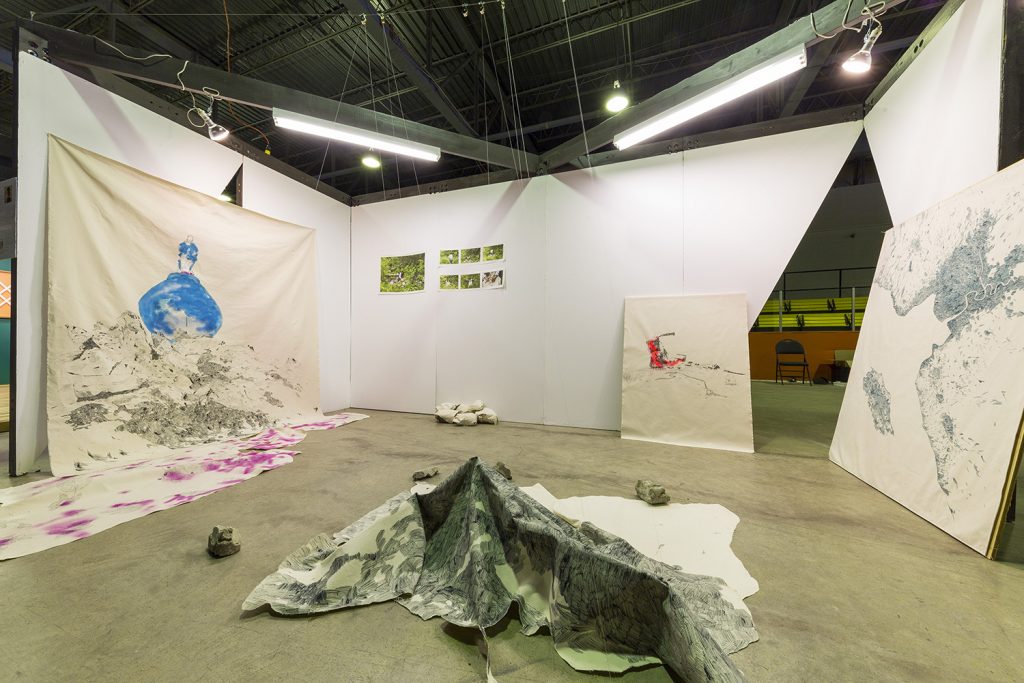
Landscape artist, Karine Locatelli explores her relationship to the natural environment, creating landscapes inspired by her sensations and personal reflections. For her, drawing from the motif is an essential stage of reflection that enables her to understand her environment and have a responsive and sincere relationship to it.
Consequently, her creative process begins with a direct observation of nature, studying it in small format sketches, and then creating large-scale drawings. Her works are a kind of materialization of her strolling about and the thoughts on the Charlevoix area, particularly its Nordic aspect. On first glance, her works seem straight forward aesthetic representations, but her intention touches on more wide-ranging reflections of a sociological, cultural and political nature.
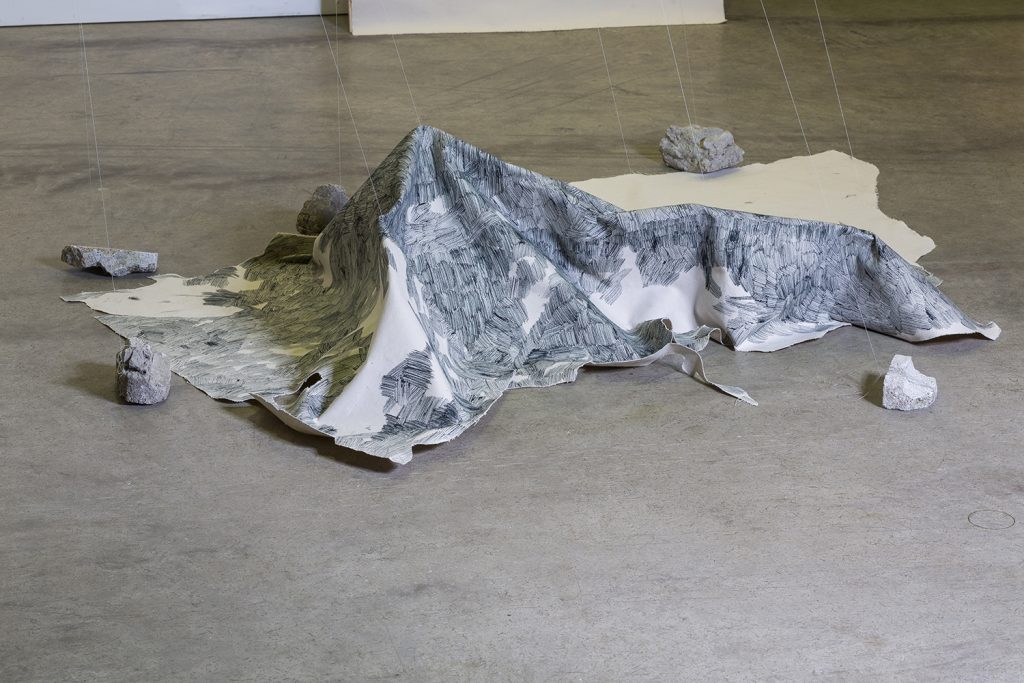
At the Symposium, Karine Locatelli created an immersive installation, giving the feeling of an enveloping panoramic landscape, in which some components, connected to strings, became animated through the manipulations of visitors. This devise became a kind of metaphor for human intervention in the landscape.
As part of the landscape tradition and the practice of working in nature, which is a feature of the Charlevoix region, her project refers to the cultural history of the place and revives it. The landscapes represented also testify of past events that have changed the land profoundly, and propose a questioning of its fragility and its future.

A native of Lévis, Karine Locatelli draws landscapes, inspired by the Nordicity of the Quebec land. She has had solo and group exhibitions in venue, notably in Trois-Rivières, Baie-Saint-Paul, Saguenay, Lévis and Montréal,. She has participated in artist residencies in Val-David and Trois-Rivières. She works on collaborative projects that facilitate producing art in the countryside, one of which is the creation of the artists’ residency Résidence nomade on Anticosti island.
She holds a BFA fromLaval University and an MFA from the Université du Québec à Chicoutimi.

Drawing on notions of copying, handmade work and manufactured objects, Mitch Mitchell combines references to art history and images from consumer culture, which he re-interprets in order to underline its aesthetic, historical or economic values. Around recognizable objects, representative of manual know-how or manufactured objects, his works raise questions about the value of fabrication and its alienating nature, on the richness or the banality of materials, and touches on issues of consumption, heritage preservation and social distinction.



During the Symposium, Mitch Mitchell copied a Louis XVI armchair. This style corresponds to a type of furnishing prized by the elites in France from 1774, at the beginning of the reign of the eponymous king, until 1785, just before the outbreak of the French revolution. This reference to the Louis XVI style raises questions about contemporary social tensions between the rich and the poor, around the breaking point it represents. Mitch Mitchell thus also highlights the values associated with craftsmanship and the quality of materials, to which he opposes the trivialization of everyday consumer objects.

Mitch Mitchell was born in the Midwestern United States, where he earned a Bachelor of Fine Arts from Illinois State University in Chigago, before earning a Masters of Printmaking from the University of Alberta. His work has been featured in several exhibitions in Canada and abroad, including the Kelowna Art Gallery, dc3 Art Projects in Edmonton, Sporobole in Sherbrooke and Vaste et Vague in Gaspésie. He has also represented Canada at the Douro Print Biennial, Portugal (2010 and 2012), and at an exhibition at the National Museum of Fine Arts in Chongqing, China. His work has won him numerous awards and is in the collections of the Museum of Fine Arts, Boston and the Art Gallery of Alberta.

According to Dong-Kyoon Nam, the subversion associated with any transformation remains an idealistic notion if one does not take into account the material structure of objects and the infrastructure supporting their production. In a micro-type approach, he dwells on a meticulous deconstruction of technological objects, one model at a time, leaving room for accidents denying the complex relationships of their components. His approach boils down to recomposing these devices, without concern for functionality, he thus exposes the prosaic nature of their internal parts and their mechanical systems, as well as the programmed obsolescence which conditions them.
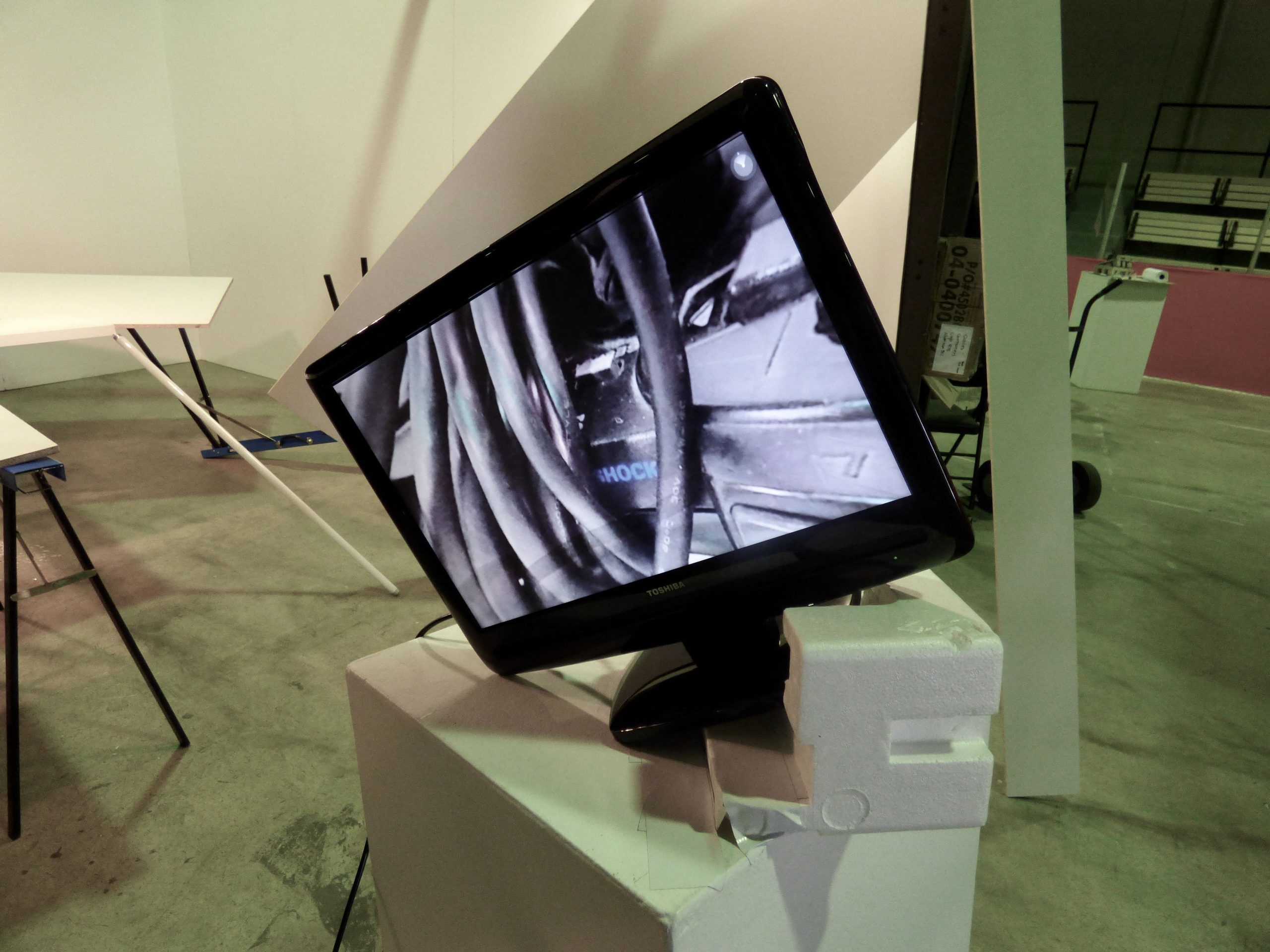

At the Symposium, Dong-Kyoon Nam collected old-fashioned or discarded electronic devices to highlight the ephemeral nature of these consumer technologies. He deconstructed their mechanical systems and instinctively reorganized them, in order to re-configure their functional components into a dynamic DIY. Repeating the actions of the industrial assembly line, these complex micro-arrangements underline the importance of the technical relay involved and break with the apparent immediacy of digital mediation.

Born in Seoul, Korea, Dong-Kyoon Nam holds a BA in Fine Arts from the University of Windsor (2010) and an MA in Sculpture from the University of Victoria (2012). From 2013 to 2015, he taught sculpture at the University of Manitoba in Winnipeg. His works have been presented in various Canadian institutions, notably in Toronto, Vancouver, Winnipeg, Calgary and Victoria in 2014, as well as in Montreal at Skol in 2015 and at CIRCA art present in 2016. In 2017, Modern Fuel in Kingston dedicated him an individual exhibition

Based in the United States, Elise R Peterson is interested in those excluded from history and the stories of or about Afro-American descendants. She is also dedicated to the creation of objects and images highlighting their difficult living conditions.
She revisits masterpieces of Western art by integrating representations of black people, thus revealing their relative invisibility in this context. A large part of her works responds to this virtual absence of Afro-descendant people in the field of fine arts. In reaction, she uses technology to integrate well-known black figures into masterpieces in modern art history. She thus criticizes the fine arts system and the little place it gives to afro-descendant artists, while also emphasizing the stereotypical representation of people of color in the media.
At the Symposium, Ellise R. Petterson produced an installation incorporating an image of the legendary rapper Tupac Shakur in Henri Matisse’s Nu Bleu II. Pillows bearing inscriptions representative of the living conditions of Afro-descendants Americans, denounced by the rapper, invited visitors to reflect on the difficulties facing these communities. Archival audio recordings of Tupac Skakur discussing his philosophy completed her presentation. Elise R. Petterson also engaged with visitors in an open dialogue about the contemporary experience of Afro-descendants and their heritage and contribution to culture.

Elise R Peterson is a journalist, blogger, visual artist and teacher. She has published short texts, notably in Adult Magazine, Paper Magazine, Elle, Lenny Letter and Nerves. As a visual artist, she pursues research on the re-appropriation of the past of Afro-descendant communities and the re-establishment of parentage relationships. Her work has been presented in the United States, notably in New York and Los Angeles, where she has also given several training workshops. She holds a degree in graphic design from the New School of the Parson’s School of Design in New York.
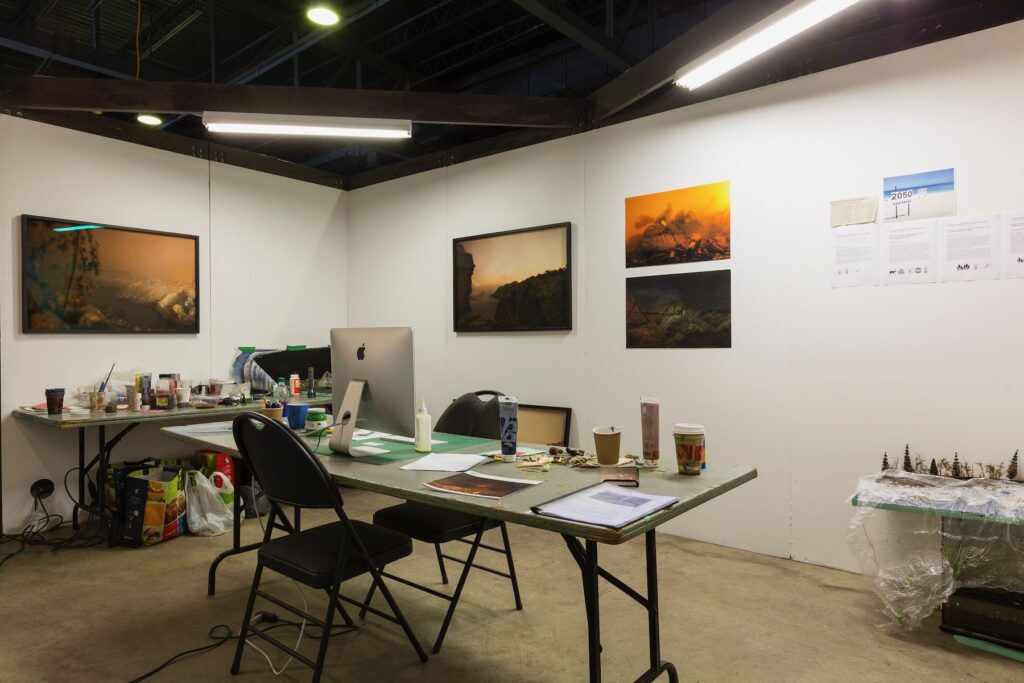
Catherine Plaisance explores the imaginary of disaster and creates landscapes marked by upheavals and extreme phenomena. Her works are inspired by existing places, by travel memories and landscape photographs, and are presented as photographic fictions made from models. Through changes of scale and the use of simple technologies, her work questions current narratives, their veracity and their sometimes misleading character.



For the Symposium, she imagined the future of the Charlevoix region, based on scientific forecasts for 2100, in the event of a global warming of more than 2 ° C. Under this pessimistic scenario, the Arctic and Antarctic ice caps would have almost completely melted and the sea level would rise by several meters, irreparably changing the course of the St. Lawrence River. By giving substance to these projections, she makes us aware of the landscapes of the region and promotes exchanges around our lifestyles and love of nature.

Originally from Lotbinière, Catherine Plaisance lives and works in Montreal. She holds a master’s degree in visual and media arts from UQAM, supported by the Quebec Fund for Research on Society and Culture (FQRSC). She has participated in numerous exhibitions in Quebec, Canada and abroad and has been active in the performance artist collective Les Fermières Obsédées from 2001 to 2009. Scholarship holder of the Conseil des arts et des lettres du Québec et du Canada Council for the Arts on several occasions, she won the Sylvie and Simon Blais Prize for the next generation in 2011.

The Famille Plouffe updates the “little history” of the places it invests through unpretentious sleight of hand, to make people believe for a moment in the marvelous and the fantastic. Through a playful prism, the domestic, the common and the everyday offer a transport to the legendary and the fabulous.
Their works are inspired by popular culture (stories, colloquialisms, gestures, objects or vernacular know-how) and highlight the richness of this intangible cultural heritage not always appreciated at its true value. Produced with precarious means, they bear witness to the fragility of this cultural heritage in the context of the current frenzy for novelty. They plead for the updating and enhancement of this individual and collective intangible heritage which is still alive and well, sometimes well despite everything.

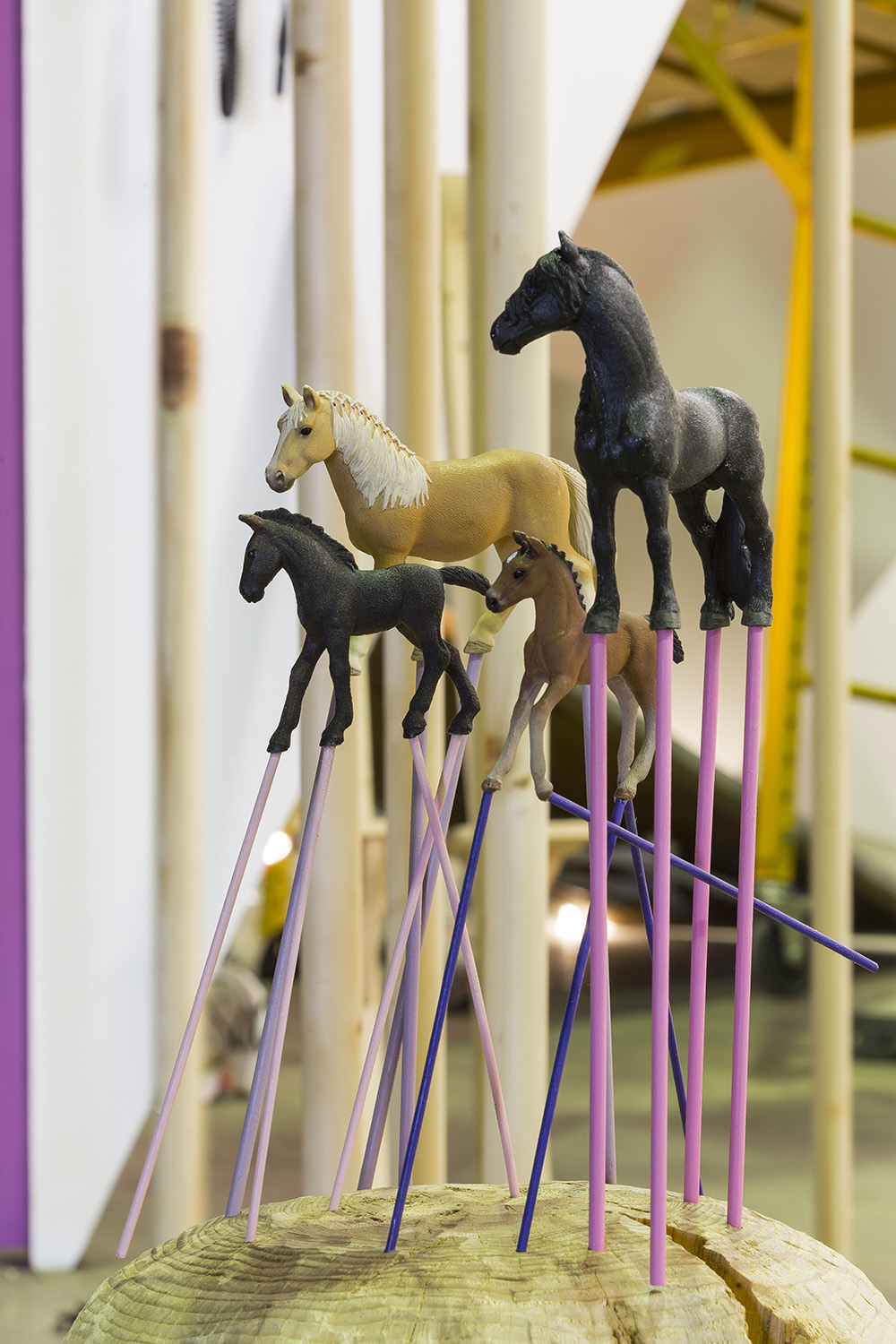
Entitled Tout une trotte !, the installation and performances of the Plouffe Family reinterpret stories from popular culture in the Charlevoix region, as well as the memories that visitors have of them. Around the figures of Alexis le Trotteur, the Échassiers de la Baie and the pine forests of Baie-Saint-Paul, they composed a form of vernacularium, bringing together what we tell ourselves, what we cultivate and what we composes daily. Their exchanges with visitors turned into collective performances nourished by popular community heritage.

The Famille Plouffe has worked together since the arrival of each one in the life of the others, as a couple or as a family. Their performance at the Symposium international d’art contemporain de Baie-Saint-Paul was the first official manifestation of their joint signature.
Previously, the father, Guillaume Boudrias-Plouffe, had presented his work in Quebec, notably at Ax Néo 7 in Gatineau, at the B-312 Gallery and at DARE-DARE in Montreal, as well as at the Musée d’art contemporain des Laurentides. of Saint-Jérôme. He has also participated in artist residencies at the 3rd Imperial in Granby and at L’Arsenal in Montreal. He has been recognized by several awards, including the award from the Conseil montérégien de la culture et des communications, the Joseph-S.-Stauffer award, as well as grants from the Conseil des arts et des lettres du Québec and the Conseil des arts. from Canada.

Jean-Charles Remicourt-Marie’s approach falls within the limits of art, architecture and historical research. In the development of an aesthetic adapted to public space, he creates sculptures and models in dialogue with architectural utopias of the past and their imaginations.
It refers in particular to the Ideal City by Claude Nicolas Ledoux and to the futuristic sustainable eco-districts of Vincent Callebaut. Famous for their social dimension and for the new modes of existence they offer, these projects articulate the forms of a rational utopia breaking with the standardized models of its time.
Jean-Charles Rémicourt-Marie thus explores architectural forms in connection with certain political doctrines. His approach reveals how a social project, progressive or authoritarian, takes shape in public space. His work is also nourished by aesthetic contradictions betraying the continuities or the political ruptures of sites or existing places

As part of the Symposium, in dialogue with the history of utopia, he produced an installation that he ca refer to for a larger architectural or public space project. It conveyed to the viewer the dynamic process from which utopia arises. In this way, past and future social projects invited the viewer challenged the viewer with crucial current questions.
Jean-Charles Remicourt-Marie holds a diploma from École supérieure d’arts & médias in Caen. His work has been presented at the Tama Art Museum in Tokyo, at the Biennale of young European artists in Mulhouse both in 2015. In 2016, he received two public commissions Déversoir and Module # 0 in the Aquitaine region in France. He participated in the Caraminot, Usine Utopik and Caza d’Oro residences in 2016. In 2017, he was hosted in residence at L’Œil de Poisson of the Complexe Méduse in Quebec.

Stéfanie Requin Tremblay draws her graphic and literary inspiration from Internet culture. Using her news feed on social media as a creative source, she combines poetic texts and incisive images in a “neo-punk” aesthetic. Off-screen, her works take various printed forms – photographs, collages, artists’ books, fanzines, photo-novels – and nourish an intimate feminine universe, sometimes violent, obsessed with the themes of anxiety, hygiene and karaoke, in pop imagery from the 1980s, 1990s and 2000s.
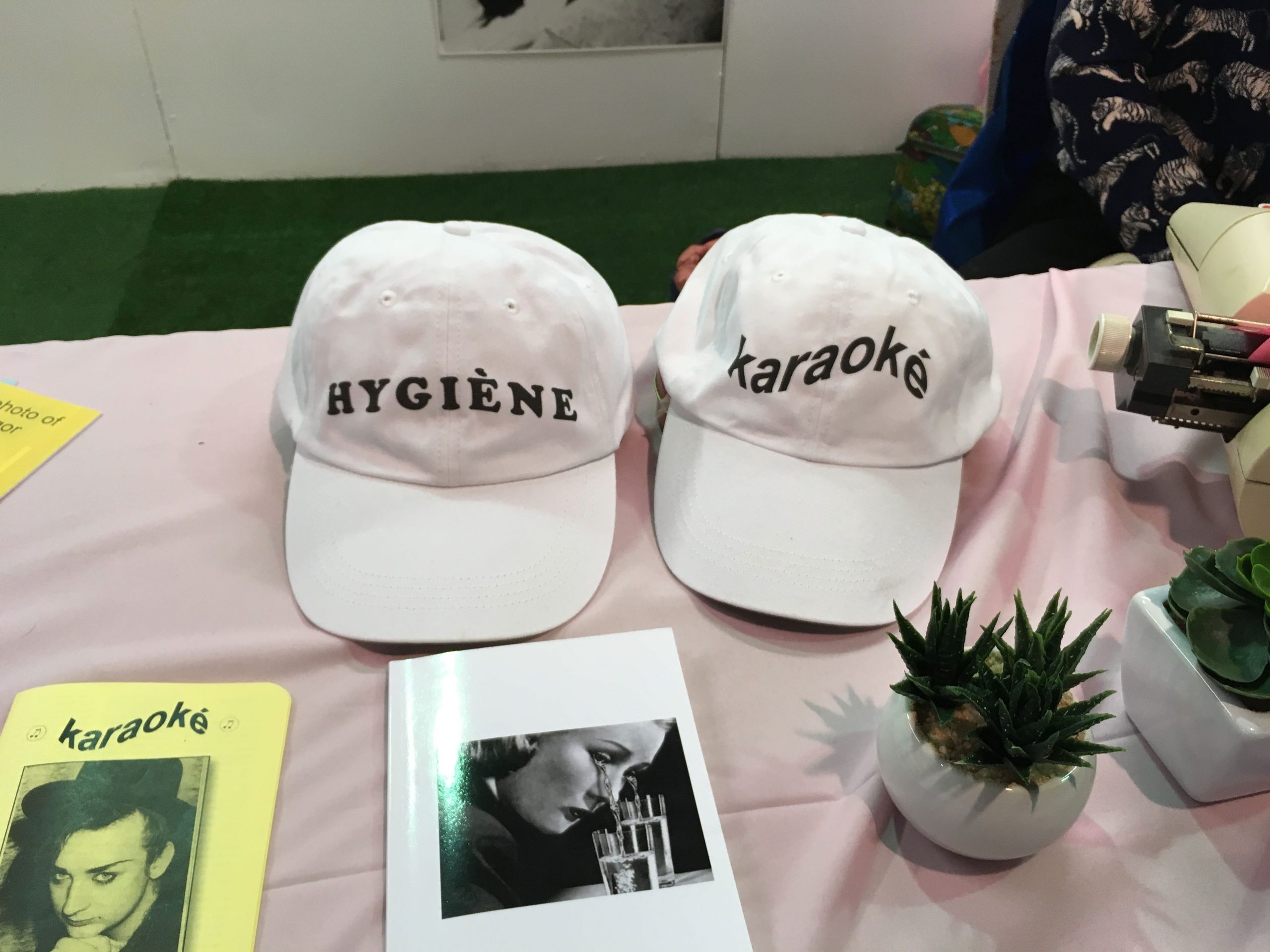

As part of the Symposium, she collected significant elements from her news feed, from both the public and private spheres, by collecting statuses, comments, messages, images or news events. She re-appropriated this material in order to transpose it into drawings, archives, photos, even written poetry. With the idea of ”printing the Internet”, she tries to counter the obsolescence of the Web by archiving this flow of information which is erased as soon as it has been seen or read. By bringing together ephemeral images and statuses, she acknowledge Facebook as a narrative space and archives the present, with the aim of maintaining its existence, in any form whatsoever.
Holder of a master’s degree in visual arts from the Université du Quebec in Chicoutimi (2009), Stéfanie Requin-Tremblay presented her work in the context of exhibitions in Quebec, notably in Saguenay, at the artist center Le Lobe in 2007 , at Espace Virtuel and at the Bang Center in 2008, at the Galerie de l’Oeuvre de l’Autre in 2011, as well as at the Sagamie Center in Alma in 2011) and at VU Photo in Quebec City in 2015. She also participated in events and creative residencies during Folie / Culture in Quebec City and Saguenay in 2014 and with the DARE-DARE center in Montreal in 2016. She forgot Obsolescence pop, highlighting five artists questioning the influence of the Internet and popular culture on contemporary creation.

For several years, Laura St. Pierre has collected plants and is interested in what they reveal about the past, present and future of a place. Using a technique borrowed from botanists, she preserves plants in isopropyl alcohol, in order to maintain their three-dimensional shape, while altering their color. She then immortalizes them in large, very high definition photographs. The use of light and the increase in the scale of plants then create images that are as intriguing as they are revealing.
To keep the plants collected, she uses domestic containers, such as jars and glass bottles once used by our grandmothers. Whereas they were used at the time to preserve food or drink, Laura St. Pierre today preserves specimens there testifying to changes in the natural environment. Neither rare nor unusual, these plants could one day become so, their collection constituting in a way an archeology of the future.


For some time now, Laura St.Pierre has been gathering and collecting plants from around Saskatoon, the city where she identified four types of ecosystems vulnerable to climate change: boreal forest, prairie wetlands, fescue prairie and the banks of the Saskatchewan River. At the Symposium, she will focus on the ecosystem of the St. Lawrence River, a site already in transformation today. As the sea level rises, the waters warm and become more acidic, precipitation increases, and the vegetation cover in and near the river changes. Throughout the event, Laura St. Pierre collected specimens of this territory, of what is not yet just a memory, which she uses to create new photographs.
Laura St. Pierre is a multidisciplinary artist. For over ten years, her installations, videos and photographs have been shown across Canada, as well as abroad. She holds a Masters of Fine Arts from Concordia University, obtained in 2006. She has been awarded numerous major scholarships from the Saskatchewan Arts Board, the Conseil des arts et lettres du Québec, the Alberta Foundation for the Arts and the Canada Council for the Arts.

Principal organizer of the Symposium international de sculpture environnementale of Chicoutimi (now Saguenay) in 1980, Denys Tremblay stood out with a 14-year performance in which he embodied the Illustrious Unknown. This service allowed him to definitively bury the history of metropolitan art, to save and integrate the Arthur-Villeneuve’s house into the Musée de la pulperie, as well as accede to municipal royalty in 1997.
In fact, he was recognized as the Roi de l’Anse-Saint-Jean (King of Saint-Jean’s Cove) in Saguenay-Lac-Saint-Jean, a position from which he abdicated in 2000. In 2009, Hervé Fischer devoted a profusely illustrated book to him entitled An American King and published by VLB éditeur. At the same time, his work is presented in an exhibition at the Center Georges Pompidou in Paris. His practice is part of an appropriation of History around personal history affecting the course of events. This interest in historical construction motivated his invitation as honorary president.
Denys Tremblay is one of the first thinkers of peripherism and the inventor of the concept of really-made reconciling the ideality of art with social reality. He was legally proclaimed by referendum Roi de L’Anse-Saint-Jean, a controversial and famous figure of Saguenay-Lac-Saint-Jean. He thus became the first of what was to be a non-hereditary succession of monarchs.

Inspired by news items and historical events, multidisciplinary artist Vicky Sabourin creates installations and tableaux vivants that rely on personal memories to explore our social imagination.
Her approach combines photography and performance in installations and performed narratives that translate into dioramas or long-lasting tableaux vivants. Embryonic, the stories replayed by Vicky Sabourin first strongly marked her, by their staging, she seeks to share this strong reaction with the public. At the Symposium, she presented a performance around memories of women feeding pigeons crossed by chance in her neighbourhoods.
Jean-François Racine
(Baie-Saint-Paul, Québec)
On Site One Week Open Studio
Accustomed to pleinairism, the painter Jean-François Racine worked on site for a week at the Symposium, in order to record the evolution of the event, in connection with past festive events in Baie-Saint-Paul. Used to this type of performance, he also painted live during the 24 heures de Tremblant or at the Massif de Charlevoix.
DÉranger project
National Film Board of Canada
Montréal (Québec)
Presentation of the DÉranger project, a creation laboratory for Indigenous artists in Quebec, organized by the National Film Board (NFB) of Canada, in collaboration with Wapikoni mobile and Oboro.
Initiated by Michèle Bélanger, Director of Programming and Production at the NFB’s French Program, in collaboration with Caroline Monnet, spokesperson and curator, this creation laboratory has enabled artists Sébastien Aubin, Eruoma Awashish, Jani Bellefleur-Kaltush, Ludovic Boney , Geronimo Inutiq, Caroline Monnet, Meky Ottawa to create as a team over five days prototypes of works to be produced and displayed in the public space or in a museum context.
Michèle Bélanger and Caroline Monnet presented the project and the prototypes of the participating artists, in particular the one developed by Caroline Monnet in collaboration with Ludovic Bonney. Filmmaker and visual artist of Breton and Algonquin origin, Caroline Monnet is interested in Aboriginal identity and bicultural reality.
Sarah Wendt and Pascal Dufaux
Montréal (Québec)
Mixing Ghosts, an installation-performance
Immersed in an echo chamber, between an action in the present and the immediate past of its media coverage, Sarah Wendt and Pascal Dufaux explore the narrative, perceptual, and videographic possibilities of technology. This installation-performance offers the public an experience combining theater of objects, choreography and machines of vision.
Sarah Wendt, dancer-choreographer and musician, lives in Montreal. Her work revolves around a kinesthetic response to the environment or in the context of collaborations. Her performances have been presented at the Galerie de l’UQAM (Montreal), at the Œil de Poisson (Quebec), at events in Sackville (New Brunswick) and at the OFFTA Festival in Montreal.
From Montreal, Pascal Dufaux studied scenography and visual arts at Concordia University. His sculptures and video-kinetic devices have been presented across Canada, Mexico, Switzerland, Germany, France and the United States. He is represented by Galeries Roger Bellemare and Christian Lambert (Montreal).

